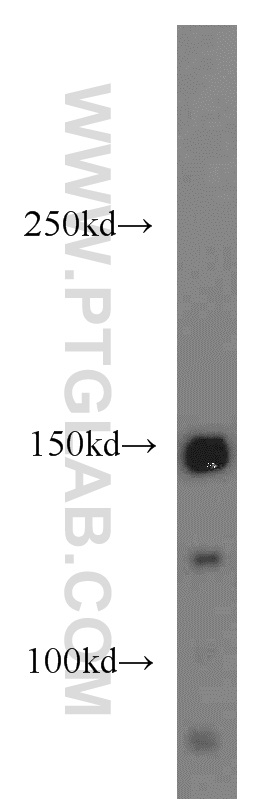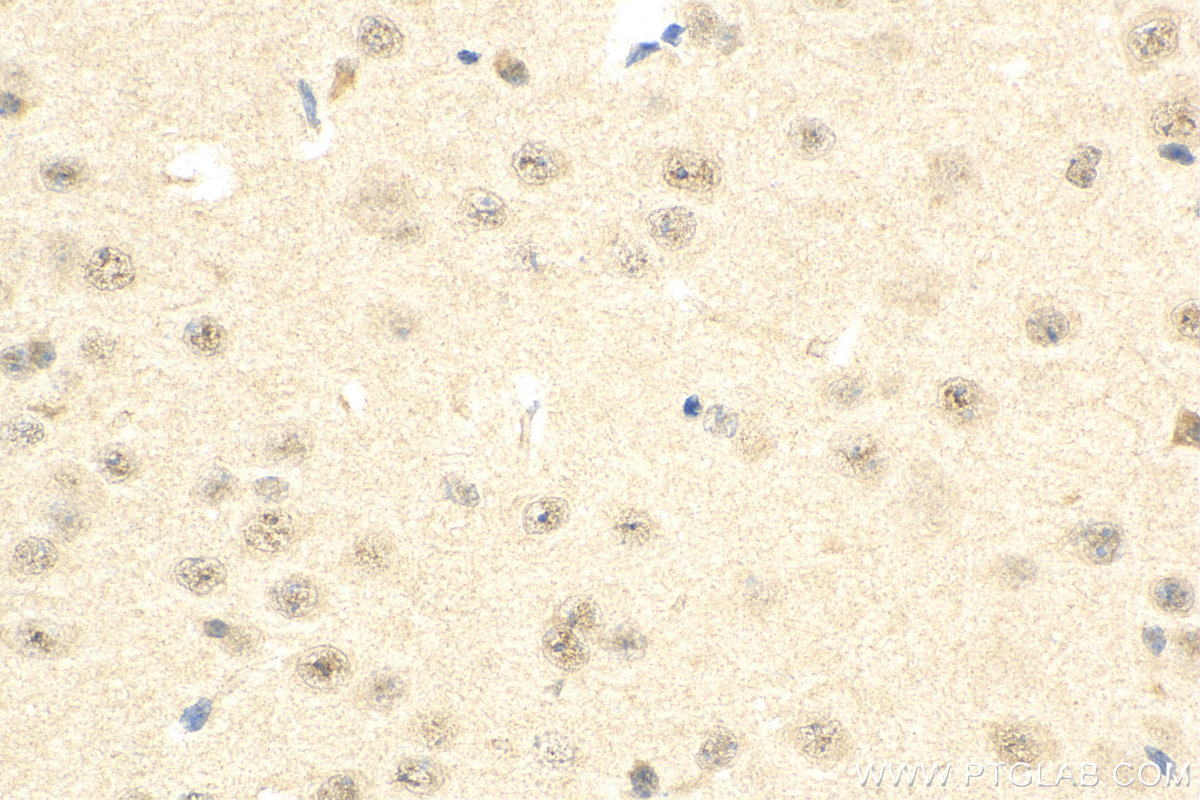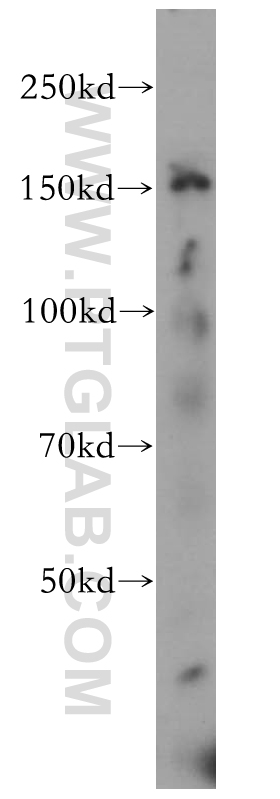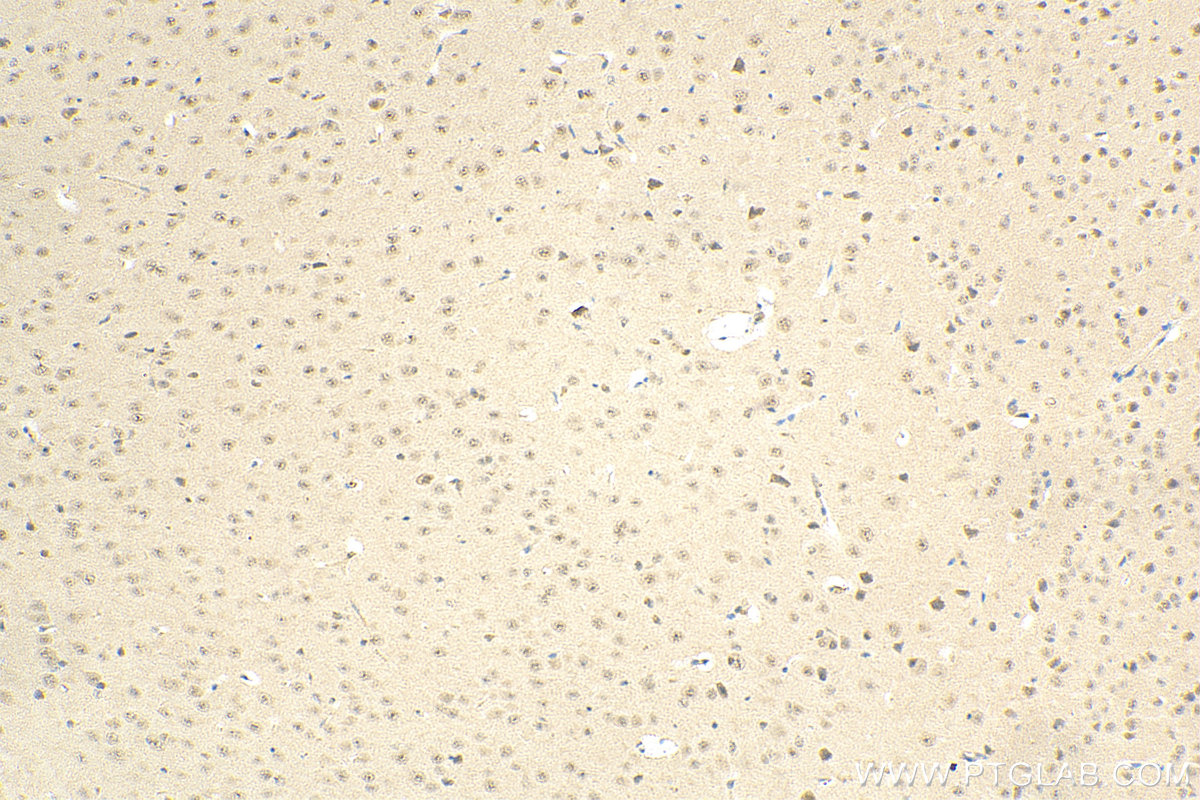验证数据展示
经过测试的应用
| Positive WB detected in | mouse brain tissue |
| Positive IHC detected in | mouse brain tissue Note: suggested antigen retrieval with TE buffer pH 9.0; (*) Alternatively, antigen retrieval may be performed with citrate buffer pH 6.0 |
推荐稀释比
| 应用 | 推荐稀释比 |
|---|---|
| Western Blot (WB) | WB : 1:500-1:1000 |
| Immunohistochemistry (IHC) | IHC : 1:250-1:1000 |
| It is recommended that this reagent should be titrated in each testing system to obtain optimal results. | |
| Sample-dependent, Check data in validation data gallery. | |
发表文章中的应用
| WB | See 1 publications below |
产品信息
18811-1-AP targets USP42 in WB, IHC, ELISA applications and shows reactivity with human, mouse samples.
| 经测试应用 | WB, IHC, ELISA Application Description |
| 文献引用应用 | WB |
| 经测试反应性 | human, mouse |
| 文献引用反应性 | human |
| 免疫原 | Peptide 种属同源性预测 |
| 宿主/亚型 | Rabbit / IgG |
| 抗体类别 | Polyclonal |
| 产品类型 | Antibody |
| 全称 | ubiquitin specific peptidase 42 |
| 别名 | USP42 |
| 计算分子量 | 145 kDa |
| 观测分子量 | 146 kDa |
| GenBank蛋白编号 | BC136656 |
| 基因名称 | USP42 |
| Gene ID (NCBI) | 84132 |
| RRID | AB_10603481 |
| 偶联类型 | Unconjugated |
| 形式 | Liquid |
| 纯化方式 | Antigen affinity purification |
| UNIPROT ID | Q9H9J4 |
| 储存缓冲液 | PBS with 0.02% sodium azide and 50% glycerol , pH 7.3 |
| 储存条件 | Store at -20°C. Stable for one year after shipment. Aliquoting is unnecessary for -20oC storage. |
背景介绍
USP42(ubiquitin carboxyl-terminal hydrolase 42) is also named as deubiquitinating enzyme 42 and belongs to the peptidase C19 family. It consists of 1,324 amino acids with a predicted molecular weight of 146 kDa and contains the conserved Cys, Asp (I), His and Asn/Asp (II) domains defined as one of characteristics for deubiquitinating enzymes, which may play an important role in mouse embryogenesis and spermatogenesis(PMID:16904385). This protein has 2 isoforms produced by alternative splicing. This antibody is specific to USP42.
实验方案
| Product Specific Protocols | |
|---|---|
| WB protocol for USP42 antibody 18811-1-AP | Download protocol |
| IHC protocol for USP42 antibody 18811-1-AP | Download protocol |
| Standard Protocols | |
|---|---|
| Click here to view our Standard Protocols |



